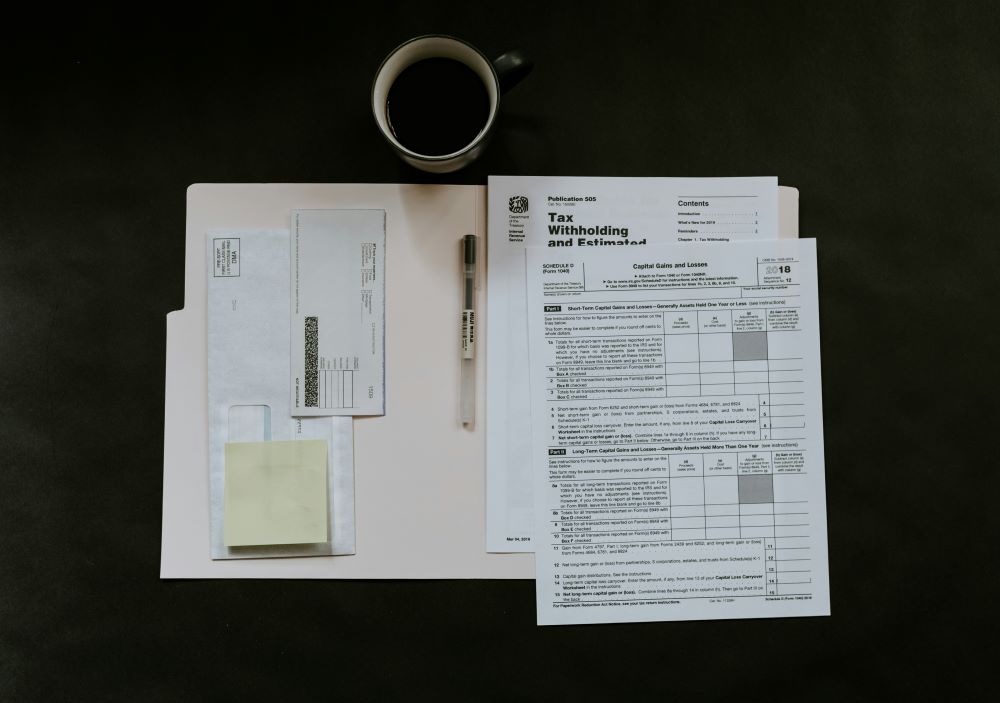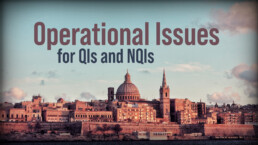Ross McGill
Your W-8 Questions Answered
In our last blog about W-8 forms, we talked a bit about what they are and what they’re used for. We got a lot of questions about W-8 forms off the back of that post, so today I thought it would be a good idea to gather some of them together and answer them. I promise I’ll do my best to not answer each one with ‘it depends’!
If you need an update on the basics of a W-8, click here to read the last article. Otherwise, let’s get into it.
Who Needs to Complete W-8 Forms?
Any non-US investor trying to open an account with a broker or a custodian bank will almost certainly be asked to provide a W-8 (or a W-9 if they’re American). The institution will ask you to fill one in or collect the information they need from their website (called a substitute W-8).
Which Countries Have Double Tax Treaties with The US?
This is a tricky one because double-tax treaties are changing all the time. However, I can tell you that at the time of writing, there are approximately 65 countries that have a tax treaty with the US. Get ready for a long list, because that includes:
- Armenia
- Australia
- Austria
- Azerbaijan
- Bangladesh
- Barbados
- Belarus
- Bulgaria
- Canada
- Chile
- China
- Cyprus
- Czech Republic
- Denmark
- Egypt
- Estonia
- Finland
- France
- Georgia
- Germany
- Greece
- Iceland
- India
- Indonesia
- Ireland
- Israel
- Italy
- Jamaica
- Japan
- Kazakhstan
- Korea
- Kyrgyzstan
- Latvia
- Lithuania
- Luxembourg
- Malta
- Mexico
- Moldova
- Morocco
- Netherlands
- New Zealand
- Norway
- Pakistan
- Philippines
- Poland
- Portugal
- Romania
- Russia
- Slovak Republic
- Slovenia
- South Africa
- Spain
- Sri Lanka
- Sweden
- Switzerland
- Tajikistan
- Thailand
- Trinidad
- Tunisia
- Turkey
- Turkmenistan
- Ukraine
- Venezuela
- United Kingdom
- Uzbekistan
When And Where to Submit Your W-8
No one submits their W-8 or W-8BENEs directly to the IRS. Instead, you send them back to the institution that requested it. They will then be used by the institution to decide whether to let you open an account, how to treat and tax US investment income paid to your account and whether your account is reportable under US anti-tax evasion regulations.
What’s The Difference Between W-8 And W-9 Forms?
Just to add in another issue, there’s also a W-9 form. Thankfully, it’s easy to differentiate the two.
W-8 forms are for non-residents of the US only. That includes international students, who will need to file a W-8BEN where necessary.
W-9 forms are for citizens and residents of the US. So if you’re a US resident for tax purposes, then you’ll need to provide a W-9.
How Long is a W-8BEN Valid For?
It does depend (sorry).
Provided none of the details on the form change, your W-8BEN will be valid for three calendar years from the end of the year in which you sign it. So, if you completed the form on the 28th of March 2024, it will be valid until the 31st of December 2027.
There is another quirk of the system, but it shouldn’t affect you. Your financial institution is collecting these W-8s to document your tax status under two different “chapters” of the US Internal Revenue Code – Chapter 3 and Chapter 4. The quirk is that if your financial institution is only collecting the W-8 solely to document your Chapter 4 status, then the form is valid indefinitely or until you have a change in circumstances. The three-year validity rule only applies if you’re expecting to receive US investment income into your account, so the financial institution needs to know your Chapter 3 status too.
What’s The Difference Between a W-8BEN and a W-8BENE?
There are a few differences between the W-8BEN and the W-8BENE. The main one is that the W-8BENE is the form for ‘entities’, meaning any type of business or other type of institution that has more than one owner. That could be a corporation, certain types of partnership or trust, exempt entity, public and private foundations, international organisations and even foreign governments.
The default US tax rate for income received by foreign businesses is 30%, but this form will allow the business to receive a tax treaty reduction if it’s applicable and if it’s properly claimed on the form. In particular, the entity has to make a certification on the form to show that it meets what is called the limitation on benefits test.
The W-8BEN on the other hand, applies to income paid to individuals. So while the outcome is similar, the forms are aimed at different categories of people and types of account holders.
We went over these differences in more detail here.
What Happens If I Fill in the Form Incorrectly?
There are estimated to be around 900 million W-8s in circulation and about 30% are completed incorrectly in Europe. That failure rate rises to about 70% in Asia. That’s because it’s an American tax form, it’s not simple and it’s not written in plain English. Differences in language, culture and levels of understanding can affect whether you understand what you’re signing.
The big thing to recognise is that the form is signed under penalty of perjury. This means that if you fill the form in incorrectly, whether that’s deliberate or accidental, and your financial institution taxes your US income at the wrong rate, you’re the one on the hook for liability, not them.
In the end, most financial institutions are very conservative. If there is any doubt, they will tax at the maximum rate of 30%. That means that you may be over-taxed through no fault of your own. In such cases, if your financial institution is a qualified intermediary (QI), then you can ask them for a refund because their contractual agreement with the IRS obligates them to do so. If they are not a QI, then you can, in theory, file a claim directly to the IRS for a refund. The process is not simple or quick and you’ll need to ask your financial institution for a form 1042-S to prove that they over-taxed you. Then, if you’re an individual, you can file a claim on a form 1040-NR together with your 1042-S (and other supporting evidence). If you’re filing a reclaim request for an entity that was over-taxed, the form will be an 1120-F.
Who Can Help Me?
Us! At TConsult we have over 20 years’ experience in the financial services industry, particularly dealing with US withholding tax and all that comes with it. Our subject matter experts have detailed knowledge of the governments and financial institutions in over twenty-seven countries, making us perfectly placed to handle your W-8 questions and support you through the process.
We created an online platform for W-8 forms to be used by financial institutions. So, if you work for a financial institution that provides access to the US securities markets, you should get a demonstration of our Investor Self-Declaration (ISD) system. This collects all the required information for a substitute of all the W-8 forms or W-9 and makes sure that you don’t make any mistakes.
If you would like to know more, or if you’re a financial institution struggling with compliance, or you have questions about a W-8, W-8BEN or W-8BENE, just get in touch with one of our experts today.
Articles
Gain deeper insight with articles that give our considered opinion and predictions of where the industry will go next.

Announcement from the Chairman
November 5, 2024I am delighted to announce that TConsult has opened its first branch outside the UK, in Malta. The UK parent […]Read more

曝險地圖 – 什麼是曝險地圖以及為什麼您需要一份
November 8, 2024身為金融機構,您面臨許多挑戰。遵守IRS要求的法規以及您的身份所要求的任何法規可能只是其中之一,但卻是最重要的一項。因此,如果您不確定您所承受的風險,或您是否做正確的事,那麼您可能需要一些協助。這就是我們的曝險地圖報告起作用的地方。 什麼是曝險地圖報告? 曝險地圖報告(exposure map report,簡稱EMR)是一種監管風險和規劃的工具,用於幫助企業做出更明智的決策。它們是一個非常有用的工具,因為一般的法規,尤其是稅務法規,都非常複雜。您需要做的就是嘗試閱讀它們,就能明白我們的意思!合規並不僅僅是一連串點連結點的線性連結,最後會做出明智的決策。例如,使用EMR的一個常見原因是為了建立NQI公司過渡到QI狀態的利益。 曝險地圖報告是由TConsult團隊設計,以執行兩項主要任務,我們發現我們的客戶在這兩項任務皆遇到了困難。第一部份是描述金融機構在特定法規或一組法規方面當前和/或預期情況。第二,描繪出金融機構的實際或預期情況與法規之間的接觸點。 EMR的主要內容將集中在這兩個領域,但還有第三部份。在此,報告撰寫者將根據事實模式(FACT pattern)解釋發現的任何問題、必要的補救措施以及幫助公司實現其目標的任何建議。 一旦我們交付報告,如果您有任何問題或任何需要釐清的地方,我們也會在EMR後進行ZOOM或Teams視訊通話。您可以在此提出任何問題,以確保您對風險有正確的詮釋,並清楚瞭解接下來應該發生什麼事。 EMR如何運作? 幾乎所有公司的EMR流程都是一樣的。我們首先收集報告主題相關的「事實模式」。讓我們以NQI為例。事實模式可能相當廣泛,因為引用Donald Rumsfeld的話,您不知道您不知道的事,更重要的是,您不知道哪些事實可能與報告相關。所以我們要廣泛地撒網,並從那裡開始琢磨。 對於 NQI -to – QI 曝險地圖報告,我們需要知道: […]Read more

Exposure Maps – What They Are and Why You Need One
November 8, 2024As a financial institution you face a lot of challenges. Keeping up with the regulations demanded by the IRS, along […]Read more

多重扣繳義務人規則及其對您的意義
November 15, 2024最近我們遇到一個相當有趣的情況。一家非合格中介機構(或稱NQI)與我們接洽,聲稱他們沒有申報義務,因為他們的上游交易對手已經申報了他們收到的款項。所以他們的印象是他們不需要申報1042-S或1042表單。 現在,有些是真的,有些則不是。因此,我們想花點時間澄清一下。 什麼是多重扣繳義務人規則? 多重扣繳義務人規則說的是,如果其他扣繳義務人正確扣繳,並將款項申報給與另一個有相同收款人的扣繳義務人,那麼另一個扣繳義務人就不必申報其所得或扣繳稅款。國稅局的具體措辭是: 「只有在其他扣繳義務人申報了相同的金額給相同的收款人,且另一個扣繳義務人已正確扣繳的情況下,扣繳義務人才無需申報1042-S表單。」 這個規則中需要注意的關鍵部份是「同一收款人」一詞。這全部與揭露有關。如果NQI已向QI揭露其客戶,則QI將直接向IRS申報每位最終受益人(beneficial owner),並向最終受益人發出收款人副本。這表示QI已經執行預扣稅,同時也以NQI在沒有揭露客戶的情況下會採用的相同方式申報收款人。因此,NQI對於已揭露的收款人沒有申報義務,如果所有收款人都已揭露,則沒有1042報稅義務。 那麼什麼是例外情況? 對於不揭露其客戶的NQI(也稱為非揭露式 ND-NQI),情況則有所不同。IRS在撰寫法規時,假設所有NQI都會向QI或美國扣繳義務人(US Withholding Agent, USWA)揭露其客戶,但實際情況並非如此簡單。大多數NQIs基於以下三個原因中的一個或多個原因不揭露客戶 – 因為沒有租稅協定優惠、他們擔心揭露可能會違反當地的資料保護法,或者他們只是不想將客戶名單提供給潛在競爭對手! 如果客戶不會(或沒有)申請租稅協定優惠,也不會有稅務上的好處。在這種情況下,無論NQI揭露與否,稅率都是30%,而且不適用多重扣繳義務人規則。這表示ND-NQI應依據收到的所得類型與涉及的交易對手,分別申報每位最終受益人。在這裡,交易對手不能申報同一個收款人,因為NQI沒有向交易對手揭露必要的資訊,所以該規則不適用。這就是1042-S申報代碼包含「未知收款人(unknown)」作為選項的原因。當使用此代碼時,交易對手向未揭露資訊的NQI提交的1042-S會顯示ND-NQI為中介機構(intermediary),而收款人為「unknown」。 當然,這會造成一些困惑。在一個案例中,我們聽說有一家NQI聲稱其交易對手已申報了相同的收件人 – […]Read more

The Multiple Withholding Agent Rule, and What It Means for You
November 15, 2024Recently we came across a rather interesting situation. We were approached by a non-qualified intermediary (or NQI) who claimed […]Read more

W-8BEN-E的誤用
November 22, 2024現在您應該熟悉W-8BEN-E表單了。您甚至可能曾經填寫過此表單。但在與金融機構合作時,我們發現了一些問題。非合格中介機構(或稱NQIs)有可能誤用W-8BEN-E,他們使用(或被鼓勵使用)BEN-E規避美國稅務法規,並在不揭露的情況下獲得租稅協定優惠,從而使他們能夠逃避申報義務。這似乎不太對 – 是吧? 論點… 當我們與正在做這件事的機構討論時(因為有一些!),我們總是聽到相同的論點。事情像這樣: 「我們在我們的司法管轄區組織和成立,而我們的司法管轄區剛好與美國有雙重租稅協定。我們也碰巧是經紀商,我們取得客戶資產的所有權,並以「經紀商名義(street name)」與我們的交易對手持有這些資產。所以,我們應該使用的自我聲明表單是 W-8BEN-E。這也代表我們可以提出租稅協定優惠,並將這些優惠轉給我們的客戶,而無需向IRS做任何申報。 或者,如果您想要一個真正的恐慌,我們也聽過:「……我們的交易對手告訴我們,如果我們想讓生活輕鬆點,就應該向他們出示W-8BEN-E」。 現在情況很糟!在這種情況下,交易對手不會為客戶製作收款人副本1042-S,因為它是與其他直接實體客戶匯集在一起的。這對他們來說很容易。金融機構本身仍受惠於協定稅率,但不做任何申報,因為IRS不知道金融機構是收款人。 表面上看,這些都是規避美國預扣稅法規的完美方法,而且我們已經看到這種情況發生過好幾次了。問題是,這兩個論點都是錯誤的。 出了什麼問題? 這個論點分為三個層面,讓我們一次解決一個層面。 首先,所有的金融機構都是在某地註冊成立的。重要的不是您是什麼,而是您如何行事。如果您代表您的客戶買賣美國證券,或者如果您以保管人的身分提供保管服務,那麼根據定義,您就是一個中介機構。是的,即使您是一家公司。您取得這些資產的所有權並以經紀商名義持有這些資產,並不表示您是這些資產所得的最終受益人(beneficial owner)。若要瞭解更多相關資訊,請查看我的部落格文章所有權與最終受益所有權。 其次,如果您在知情的情況下代表您的客戶向其他金融機構出示W-8BEN-E,則接收機構受法規約束: 驗證W-8是正確的表單,並且填寫、簽名和日期都正確; 根據KYC檢查表單,並且; – 檢查是否沒有其他「理由知道」表單無效 […]Read more

The Misuse of the W-8BEN-E
November 22, 2024By now you should be familiar with a form W-8BEN-E. You might have even filled one out in the past. […]Read more

The 1099-DIV Box 7 Problem
December 20, 2024I’m often asked why 1099 reporting doesn’t just include US income paid to US persons. I’m always glad to be […]Read more

2025年報稅季最新消息
February 14, 2025又到了每年的這個時候!報稅季節再次來臨,我們都在嘗試找出自去年以來有哪些變動,以及我們到底該如何及時完成報稅。幸運的是,我們在這裡做一個快速回顧。 1042-S申報 首先,我們有經常性的九個月專案,也就是1042-S申報支付給非美國人士的美國所得。從請求延長申報時間開始。這聽起來可能很奇怪,但卻是必要的,因為有許多公司無法及時提供收款人副本給客戶。準備好這些報告需要等到9月份,也就是提交1042報稅表的時候。您應將1042視為總覽報告,而1042-s則是更詳細的明細表。 希望此時您不需要做任何修訂報告。但如果您的客戶投資於美國房地產投資信託基金或美國共同基金,那麼很有可能在4月份報告為股利的部份必須重新歸類為其他項目,這表示您必須經過修訂報告週期。 然後是1099申報,這是針對支付給美國客戶的美國來源所得,以及945申報,如果有任何備份預扣稅則須申報。CRS和FATCA申報現在要到來,因此您需要處理非居民帳戶持有人和美國帳戶持有人的盡職調查,以及關注CRS合作司法管轄區的變。 申報框架 隨著稅務報告框架數量的增加,報告的格式和交付機制也隨之增加。這一切都可能變得非常混亂!舉例來說,以下是我們目前使用的格式與傳送機制: 1042-S 報告使用FIRE Portal以ASCII文字檔的形式提交。 來自Model 1 IGA司法管轄區的FATCA與CRS報告以XML格式提交給當地主管機關。 2024稅務年度的1042報稅表仍以紙本形式提交。至於2025年度,則可在MeF網站以XML格式提交。 Model 2-IGA和非IGA司法管轄區內公司的FATCA報告,在IDES入口網站以XML格式提交給 IRS。 The FASTER Directive […]Read more

Tax Reporting Season Update 2025
February 14, 2025It’s that time of year again! Tax season is rearing its ugly head again, and we’re all trying to figure […]Read more
Ross is the founder and chairman of TConsult. He has spent over 26 years working in the withholding tax landscape with companies developing tax reclaim software and operating outsource tax reclamation services.
Ross not only sees the big picture but is also incredibly detail oriented. He can make even the most complex issues simple to understand. He has authored 10 books (including two second editions) on various aspects of tax, technology, and regulation in financial services, making him one of the leading authorities in the world of tax.






